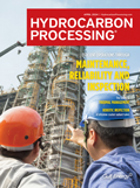Refining: High-impact challenges in today’s global refining market
To stay competitive and thrive in today’s uncertain and volatile energy market that is characterized by major shifts in supply and demand dynamics, refiners must find ways to increase operational efficiencies, maximize productivity and produce refined products at lower costs.
IP: 18.216.239.46
The Author
Zurlo, J. A. - GE Water & Process Technologies,
Jeffrey A. Zurlo is responsible for global marketing strategy–refining at GE Water & Process Technologies. With more than 25 years of experience in process engineering, refinery treatment sales and services, hydrocarbon product applications and technical support, he provides marketing and technical support to the refining and gas processing industries. Mr. Zurlo holds a BE degree in chemical engineering from the Stevens Institute of Technology in New Jersey.
Related Articles
From the Archive







Comments